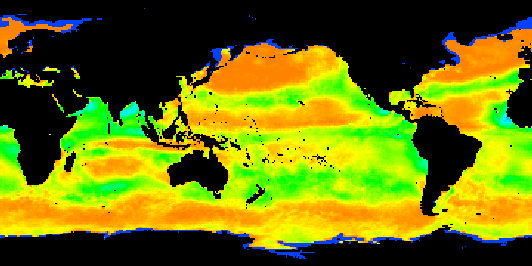While capillary waves play an important role in the exchange of heat
and mass across the air/sea interface, the underlying physics which
cause this exchange is incompletely understood. My research in this
area seeks to ascertain the mechanisms by which capillary waves
modulate transport, as well as to quantify this transport. In order to
study capillary waves in a well-controlled environment, Faraday waves
are used to create a monochromatic wave field. An image of such a
capillary wave field is illustrated below, in a 5 inch by 5 inch water
tank, where the capillary wavelength is approximately 6 mm.
These experiments have revealed a significant enhancement of the transport of
carbon dioxide due to millimeter-scale capillary waves ( Physics of
Fluids , vol. 9, no. 9, pp. 2529 - 2541, 1997). This work has also
been extended to include cases where surfactants are present on the water
surface. Experiments have also been performed to ascertain the mechanism of
this enhanced gas exchange. The figure below shows a laser induced
fluorescence (LIF) image indicating regions where carbon dioxide transport is
most pronounced.
Some of the experimental data we have obtained has been used to model the contribution of capillary waves to the gas exchange coefficient on the open ocean. The following image is a map of the fractional contribution that capillary waves provide to the total gas exchange coefficient. This work finds application in the areas of global warming and weather prediction.

I also investigate optical interactions at the air/sea interface and have demonstrated the feasibility of using total internal reflection as a means for measuring wave slope ( Applied Optics , vol. 36, no. 6, pp. 1121-1129, 1997). Some sample results of a ray tracing simulation are presented below. These results illustrate how light rays, propagating from below, can be internally reflected by the wave, eventually turning back toward the direction from which they originated. In the sequence of images (a - d) presented below, the wave becomes progressively steeper. As a result, more and more of the light rays are internally reflected.
This research has applications in laboratory wave slope measurement, as well as for laser detection of underwater objects.
Last Updated August 4, 2022.